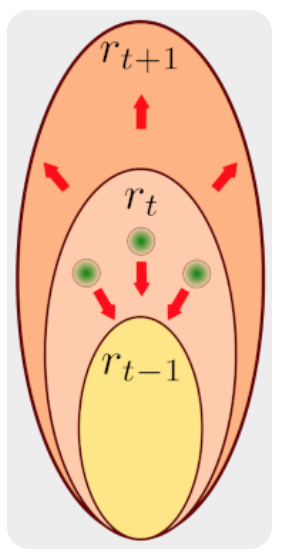previous post
The efficient control of mine operation is highly dependent on rock movement and stress propagation induced by ore extraction. In SMAT-C we have conducted scale experiments that approximate the operation with multiple draw-points in a block caving mine. The interaction of flows due to neighboring draw-points and its corresponding correlation with the induced stress result in strategies to prevent stress concentration during mine operation.

Tracer lines in single draw-point operation allows to determine movement zones

Local density variation during extraction reveals the presence of a front of dilatancy that propagates upwards. Above this front, rocks remain statics, whereas below it, rocks move downward due to the available space due to the draw.
The front velocity, is related to particles velocity through local density variations,
Particles velocity is determined according to the geometry of the outlet. In flat-bottomed hoppers, this is determined using kinematic model, obtained by solving a diffusion type equation.
In conical hoppers particle velocity is assumed radial as determined through the plasticity model, the flow is
The solution of this set of equations leads to the evolution of the dilated and draw zones which are useful for the optimization of the mine operation.


Photoelastic methodology reveals cavity formation induced by the depletion of stresses due to the formation of arches in a single draw-point operation.

Photoelasticity evidence redistribution of contact forces during particles extraction from two neighboring draw-points simultaneously.